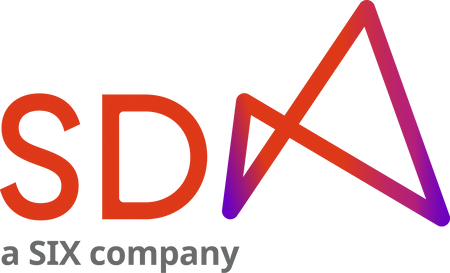In his role as Head of SDX Web3 Services, Stephan Kunz is responsible for defining and delivering SDX’s Web3 offerings. As an operator of digital market infrastructure (DMI), Web3 Services is a key development area for SDX, particularly when it comes to offering secure, reliable market infrastructure to institutional investors in a space that is increasingly subject to regulatory scrutiny.
Hello Stephan! Let’s start at the beginning – tell us more about the Institutional Custody services. How can these services help institutional clients to get started in, or better engaged with, crypto markets?
Our new institutional custody offering enables client firms to offer secure and integrated access to the digital asset market without committing the extensive resources required to develop an in-house platform. It is a fully compliant custody solution with professional handling of value transfer, reporting, and blockchain management.
For institutions, setting up and managing the various aspects of crypto custody is complex. It requires the build-up of substantial capabilities, including technical, operations, risk and compliance know-how. Our offering abstracts away the complications of blockchain infrastructure management and provides best-in-class security and service. With SDX offering crypto custody as a service, clients can quickly develop a crypto capability without the substantial cost and resource investment in building out in-house technology and operations – our solution is very cost-efficient. As an experienced market infrastructure operator, we can also ensure that all our offerings meet the highest security standards.
As a result, our clients can focus on their core capabilities of bringing new products and services to their clients.
What are the benefits of using SDX’s custody service for banks and institutional clients, compared with other crypto custody offerings?
Custody is a core requirement for any institution entering digital assets. Depending on their business model, risk appetite and strategy, they might choose self-custody or custody assets with a third party. In this context, the advantage of SDX is that it is a riskless counterparty – we are not a financially exposed counterparty, as might be the case for a crypto exchange, for example. We also offer institutional-grade custody services with the built-in security and resilience that are to be expected from an operator of regulated market infrastructure – giving clients additional confidence and peace of mind.
What types of clients will be able to use these services?
Our solution initially aims at regulated intermediaries, including banks, product providers and investment managers. Initially, our core clients will be here in Switzerland, given our position as the national FMI. However, we are also looking to the future and the potential for offering our services to financial institutions in other jurisdictions, especially in Europe. In addition, we are also looking to expand our services to large institutional investor clients such as insurance firms and pension funds. That’s further down the road. However – we are very cognizant that Switzerland is our home market, and this is where we are starting our crypto journey.
What infrastructure will they require to use the service, or how will it fit into their existing crypto infrastructure and the exchanges they execute?
Our solution minimizes the work required for clients’ build-up and integrates the required infrastructure. They will be able to connect to our custody services using standard interfaces. The objective is to limit their adaptation effort to the extent possible. However, if a client wants to trade in crypto markets, he will also need to consider trading access and manage post-trade processing. Depending on their business model, they may also have additional requirements, like staking services. While institutions, such as banks, can potentially leverage some of their existing infrastructures to trade crypto, custody is one of the key areas where new capabilities and infrastructure are required. Hence our decision to offer it as our first cornerstone service.
How does the service support regulatory compliance?
The service has been designed to be compliant with all applicable regulatory requirements from a custody perspective. We ensure compliance of all transactions, especially delivery in and out of our custody. This includes not only AML / KYC but also FATF Travel Rule requirements and blockchain analytics.
The service is also designed such that, for banks, client holdings can be treated as segregated custody. This means it is aligned with the regulatory requirements of banks from a balance sheet perspective.
How does the service support client security requirements and risk appetites?
When it comes to custody, operational and IT security – which includes the prevention of operational fraud and cyberattacks – are essential. These tend to be the highest security priorities for crypto custody. Unlike traditional securities, in crypto custody, if something leaves the custody solution and is sent to an irregular recipient, it cannot be recovered in most cases.
To our technical setup and processes and procedures, we apply our own SIX Group FMI-grade process design and control standards – creating what is FMI-grade operational security and resilience. In addition, our offering is foreseen to have insurance coverage commensurate with operational parameters and risk exposure.
What’s next for SDX in terms of Crypto product and service offerings?
Our strategy is to provide key infrastructure services to address various crypto-related topics for our clients. Firstly, we’re starting with custody for key protocols, which will be continuously expanded with support for additional tokens, better integration/interfacing for clients, and integration with other market participants for automated straight-through-processing of crypto transactions.
Secondly, we will add additional services, such as integrating our non-custodial ETH staking service.
Thirdly, we plan to expand our crypto services further into the trade and post-trade area, aiming to provide our clients with a comprehensive gateway to interact with the digital asset ecosystem.

